Special exhibition Wim Geeven
“They come about naturally, they are simple, they evoke* complexity. Wim Geeven’s objects oscillate** between sculptural and architectural, between recognizable and indefinable. They evoke a range of images without coinciding with any of them. That is partly what determines their appeal: no matter how these objects refer to a building, a mountain, a butterfly, a skeleton, a tree trunk, an airplane, … they remain a mystery. They are ambiguous, ‘unclear’ in an intriguing way. They escape our quasi-spontaneous urge to name things.” Ruth Loos, Antwerp, June 2010.
*evoke – stimulate the imagination, conjure up an image (source: Wiktionary)
**oscillate – move mass or energy back and forth around a fixed point (source: Wiktionary)
In Wim Geeven’s work, building almost always plays an important role. Building in all its aspects: from ground plan to final plan and the intermediate phases. Fragments are highlighted, made specific and used as an idiom for an image. Strong building elements are made vulnerable and in their new form provide a lyrical commentary on our temporary stay on earth.
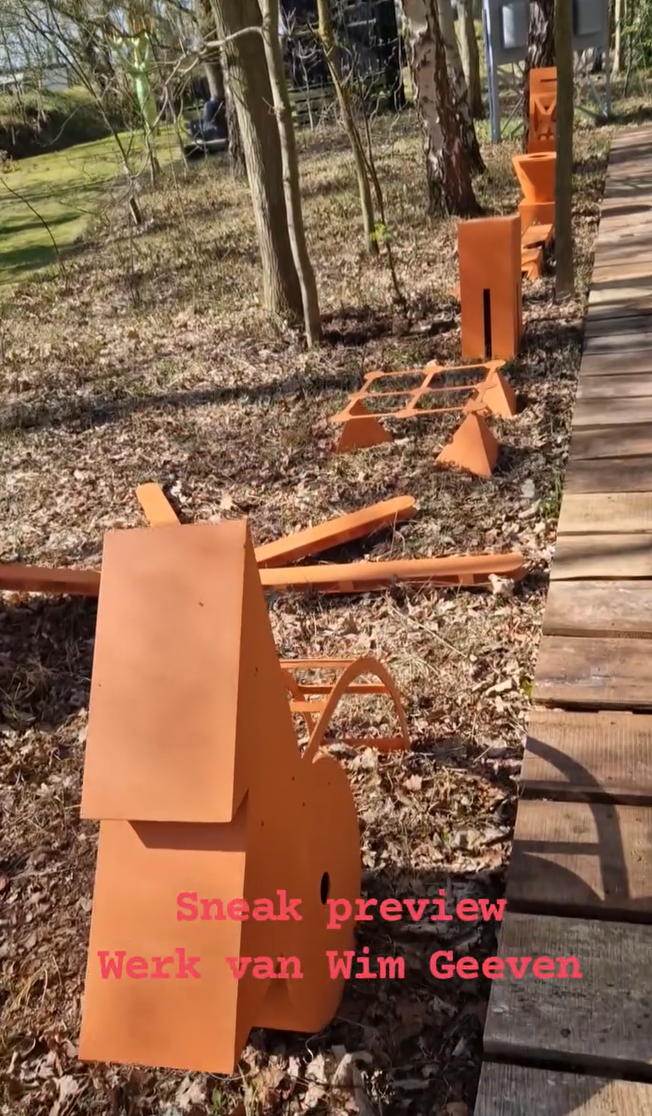
Special exhibition Jan van Munster
Works by Jan van Munster (1939 – 2024) were already on display in all major museums in the Netherlands in the 1960s. Shortly thereafter, he became internationally known. Given the great diversity of materials that Van Munster uses for his creations, it is astonishing how homogeneous his work is on a thematic level. For decades, he has concentrated with utmost consistency and constantly changing perspectives on one subject: energy!
Heat and cold, light and darkness, tension and discharge, compression and expansion, visibility and invisibility testify to the polarity that dominates his work. To summarize this polarity, Van Munster has chosen two suggestive formulas, IK and +/-, which he often quotes in his work.
“… Jan van Munster often uses elements in his work that express tension and contrast; black/white, heavy/light, light/dark. These contrasts can represent concrete, but also mental energy. + and – as abstract signs for energy and tension often recur in his visual language and they also function in Van Munster’s oeuvre as containers of energy…”. Cees de Boer, 1996 in a text about Van Munster’s installation Blaeu Erf in Amsterdam.
The sculpture garden is grateful that several works will be on display in the garden.
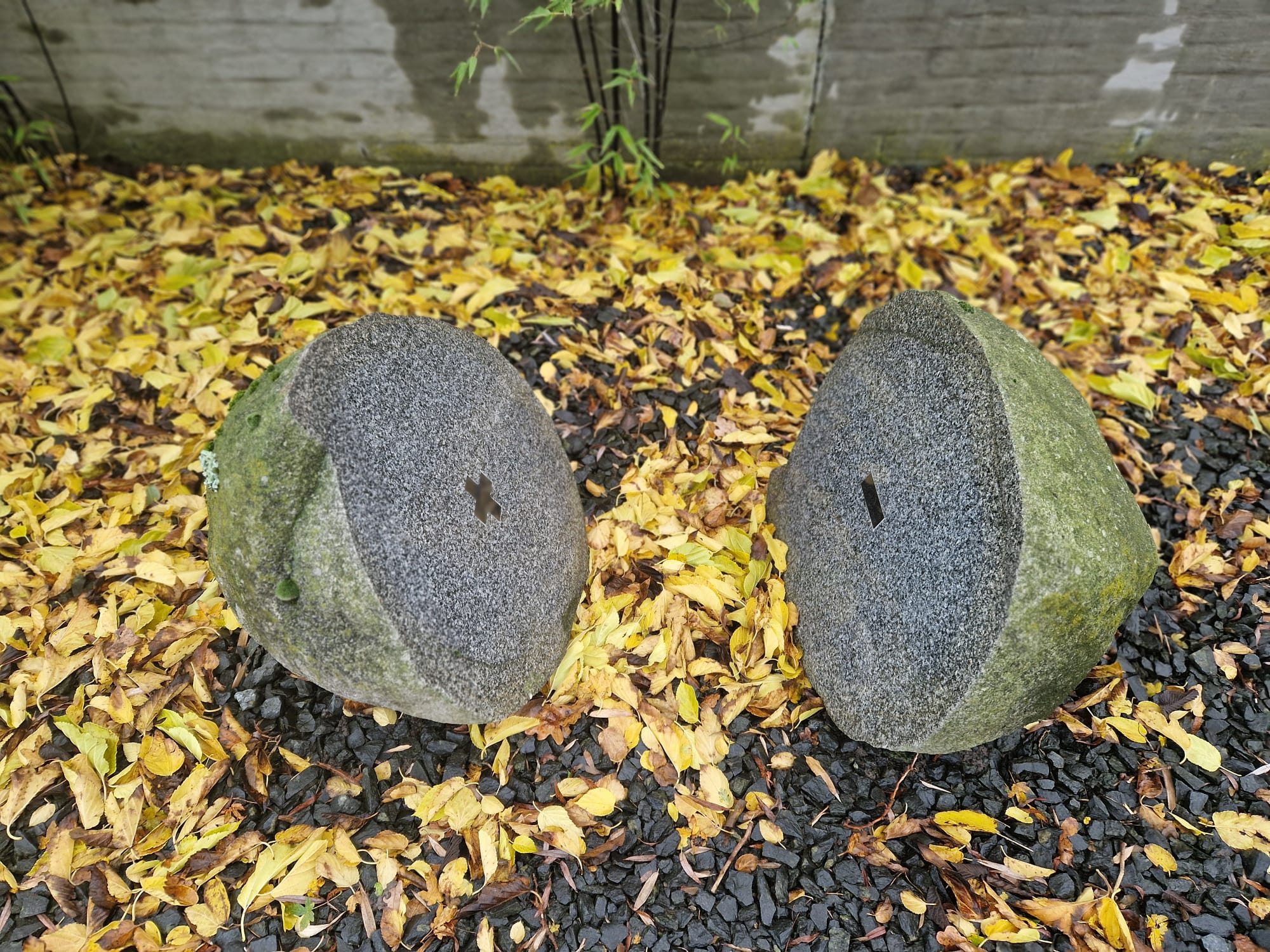
Special exhibition Eddy Gheress
Eddy Gheress is a man of few words. He is better at making sculptures. In fact, his works do not need much explanation. The visual language is clear and powerful. Even the smallest statues – minuscule in size – are monumental in character and possess great expressive power.
In recent years, he has mainly worked in stone. Large or small, it does not matter. With the help of chisels and other tools, he knows how to animate various stones. In his hands, they are transformed into voluptuous naked female figures and women’s faces, the latter called ‘masks’ by Gheress. The soft, feminine, round shapes come directly from his hands. He rarely needs a model. In combination with the hard, angular stones, a harmonious unity is created. In addition to stone, the artist now likes to work in wood. He also knows how to work this material without losing sight of its own character.
The tranquil sculpture of Eddy Gheress sometimes evokes memories of fertility goddesses from prehistory, then again of Aegean art or primitive art. But above all, a great love for the craft can be read from the sculptures. For Gheress, making a sculpture is a process of physical labor, which is guided by feeling. For him, sculpture is not a matter of the head, but a matter of the hands and the heart.
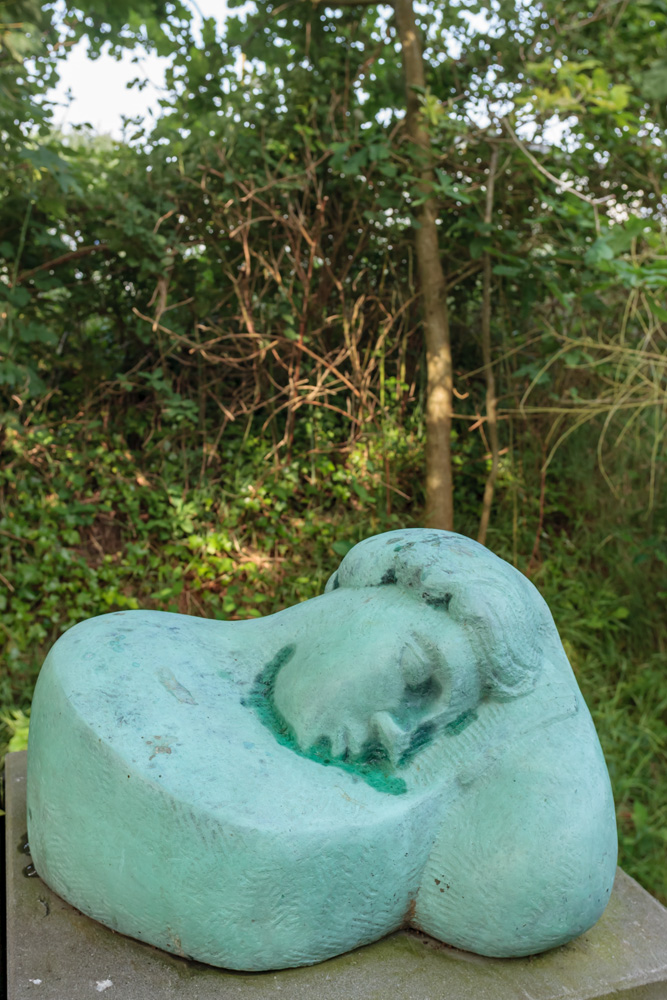
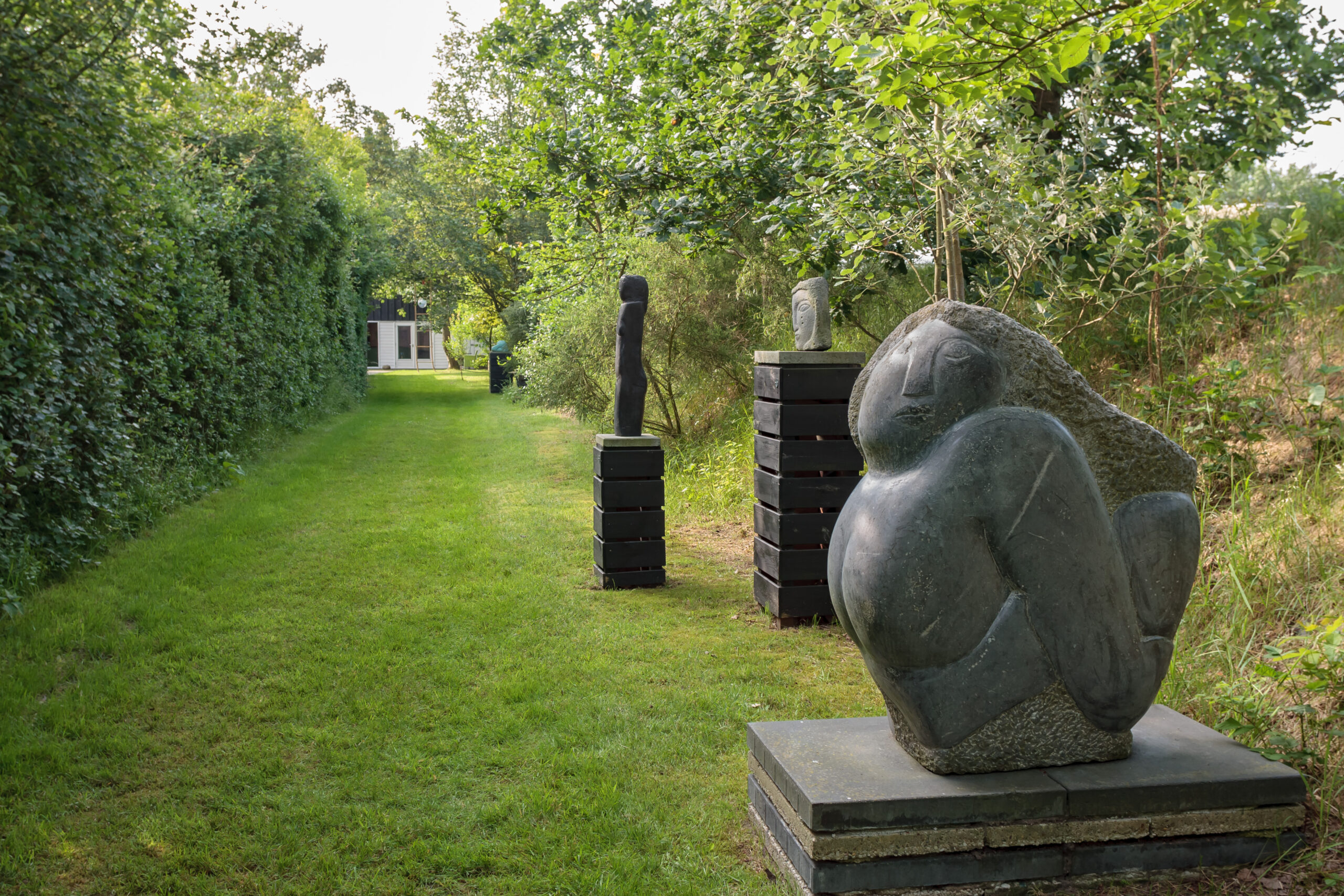
Special exhibition Gerard Höweler
The heirs of Gerard Höweler have asked us to take care of his oeuvre and that is why all the sculptures and models from his studio can now be found in our sculpture garden. Arthur Broek, owner of the sculpture garden and also an architect, has designed and built an installation especially for the work of Gerard Höweler. In an architectural presentation, a total of more than 120 works and models have been brought together.
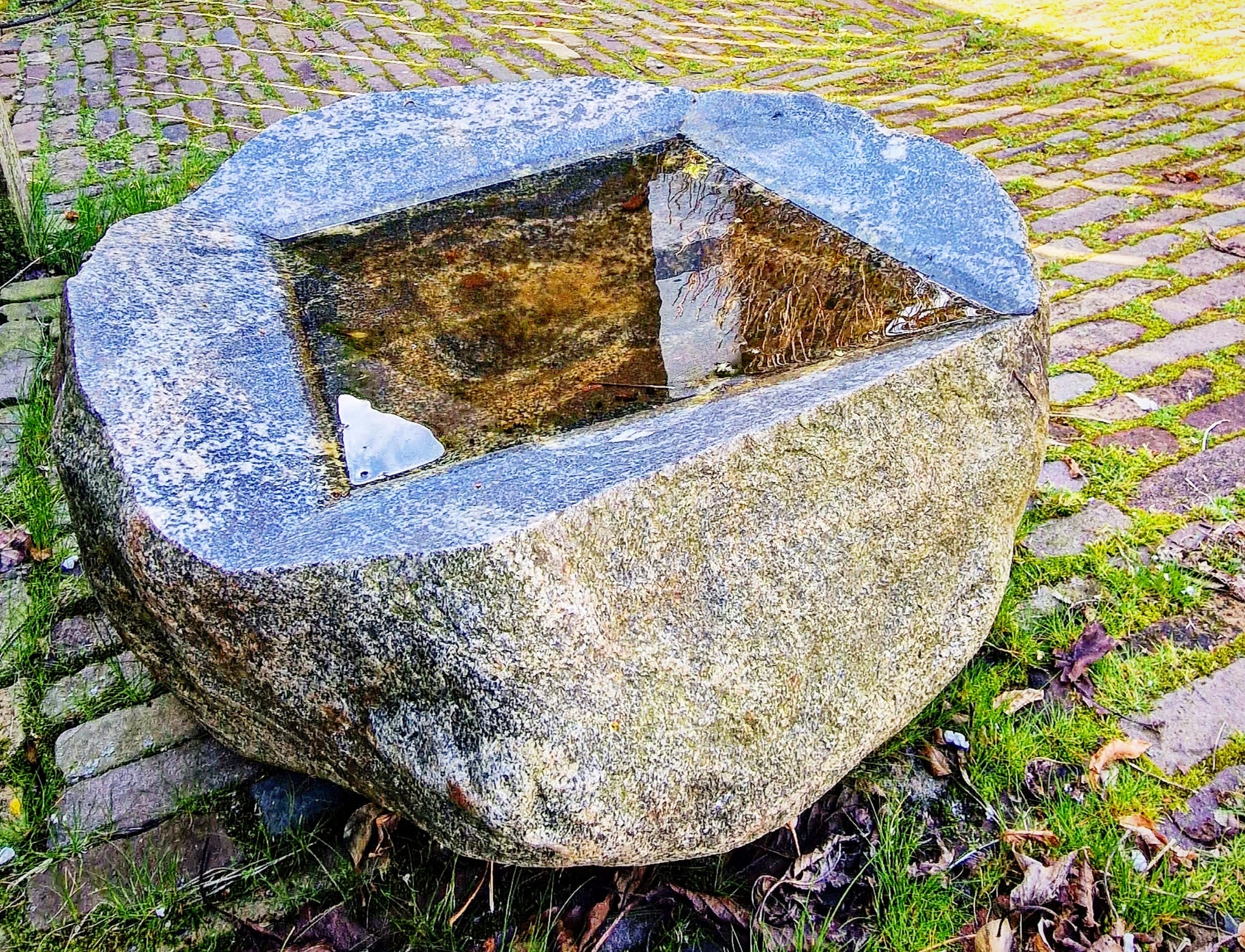
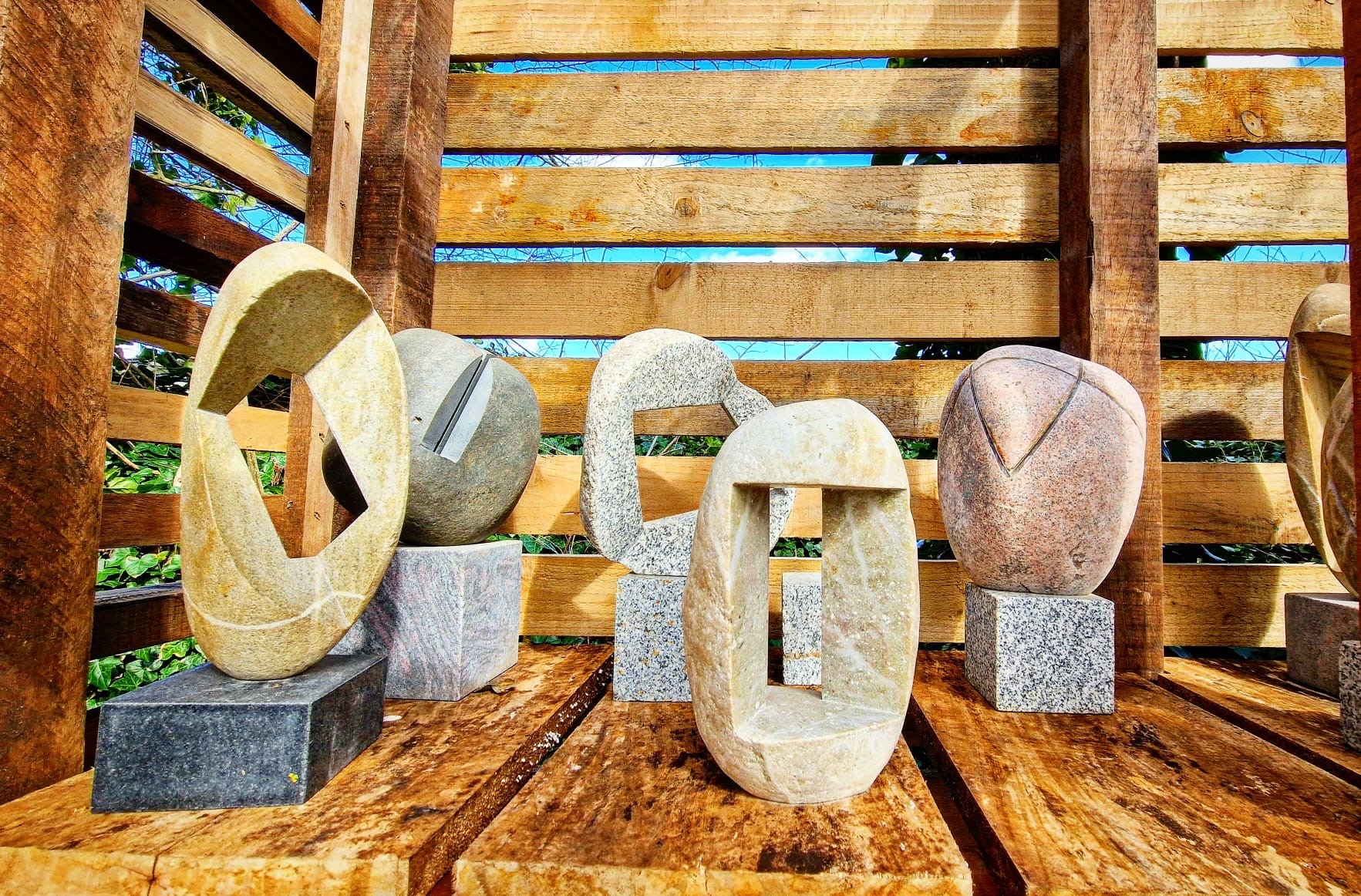
Special exhibition Jan van Munster
Works by Jan van Munster (1939 – 2024) were already on display in all major museums in the Netherlands in the 1960s. Shortly thereafter, he became internationally known. Given the great diversity of materials that Van Munster uses for his creations, it is astonishing how homogeneous his work is on a thematic level. For decades, he has concentrated with utmost consistency and constantly changing perspectives on one subject: energy!
Heat and cold, light and darkness, tension and discharge, compression and expansion, visibility and invisibility testify to the polarity that dominates his work. To summarize this polarity, Van Munster has chosen two suggestive formulas, IK and +/-, which he often quotes in his work.
“… Jan van Munster often uses elements in his work that express tension and contrast; black/white, heavy/light, light/dark. These contrasts can represent concrete, but also mental energy. + and – as abstract signs for energy and tension often recur in his visual language and they also function in Van Munster’s oeuvre as containers of energy…”. Cees de Boer, 1996 in a text about Van Munster’s installation Blaeu Erf in Amsterdam.
The sculpture garden is grateful that several works will be on display in the garden.

Special exhibition Eddy Gheress
Eddy Gheress is a man of few words. He is better at making sculptures. In fact, his works do not need much explanation. The visual language is clear and powerful. Even the smallest statues – minuscule in size – are monumental in character and possess great expressive power.
In recent years, he has mainly worked in stone. Large or small, it does not matter. With the help of chisels and other tools, he knows how to animate various stones. In his hands, they are transformed into voluptuous naked female figures and women’s faces, the latter called ‘masks’ by Gheress. The soft, feminine, round shapes come directly from his hands. He rarely needs a model. In combination with the hard, angular stones, a harmonious unity is created. In addition to stone, the artist now likes to work in wood. He also knows how to work this material without losing sight of its own character.
The tranquil sculpture of Eddy Gheress sometimes evokes memories of fertility goddesses from prehistory, then again of Aegean art or primitive art. But above all, a great love for the craft can be read from the sculptures. For Gheress, making a sculpture is a process of physical labor, which is guided by feeling. For him, sculpture is not a matter of the head, but a matter of the hands and the heart.


Special exhibition Wim Geeven
“They come about naturally, they are simple, they evoke* complexity. Wim Geeven’s objects oscillate** between sculptural and architectural, between recognizable and indefinable. They evoke a range of images without coinciding with any of them. That is partly what determines their appeal: no matter how these objects refer to a building, a mountain, a butterfly, a skeleton, a tree trunk, an airplane, … they remain a mystery. They are ambiguous, ‘unclear’ in an intriguing way. They escape our quasi-spontaneous urge to name things.” Ruth Loos, Antwerp, June 2010.
*evoke – stimulate the imagination, conjure up an image (source: Wiktionary)
**oscillate – move mass or energy back and forth around a fixed point (source: Wiktionary)
In Wim Geeven’s work, building almost always plays an important role. Building in all its aspects: from ground plan to final plan and the intermediate phases. Fragments are highlighted, made specific and used as an idiom for an image. Strong building elements are made vulnerable and in their new form provide a lyrical commentary on our temporary stay on earth.


Special exhibition Gerard Höweler
The heirs of Gerard Höweler have asked us to take care of his oeuvre and that is why all the sculptures and models from his studio can now be found in our sculpture garden. Arthur Broek, owner of the sculpture garden and also an architect, has designed and built an installation especially for the work of Gerard Höweler. In an architectural presentation, a total of more than 120 works and models have been brought together.

